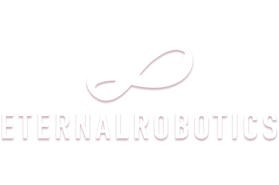How to define your Business Linkedin Ad video objective
Crafting an effective Business Linkedin Video Ad hinges on clearly defined goals. Marketers should first pinpoint the precise business outcome they seek, moving beyond mere marketing metrics. Success ties directly to aligning video content with specific stages of the buyer journey, whether building initial awareness, driving deeper consideration, or prompting decisive conversion actions. Each stage demands a tailored video approach and a clear path forward for the viewer.
Defining calls to action must be unambiguous, guiding viewers toward the immediate next step. Replacing generic phrases like "Learn More" with action-oriented text relevant to the video's objective is critical. Think "Download the Report" for lead generation or "Request a Demo" for driving conversions. Integrating these calls seamlessly within the video's narrative and prominently at the end maximizes impact.
Measuring the return on investment necessitates tracking costs against value generated. This might involve calculating the cost per qualified lead or observing a reduction in sales cycle length due to better-informed prospects from video engagement. Analyzing viewer behavior provides deeper insights. Using analytics to see which parts of a video are watched or skipped helps refine content, ensuring key messages resonate. For top-of-funnel awareness objectives, a concise LinkedIn animated video ad can quickly convey brand personality and value, grabbing attention in a busy feed.
Incorporating social proof, such as customer logos or brief testimonials, quickly builds credibility. Showcasing real-world scenarios demonstrates product value in context. Continuously optimizing through A/B testing different elements—like the opening hook, call to action wording, or thumbnail image—reveals what truly resonates with the target audience and drives desired actions. Understanding the desired outcome shapes every element of a successful Business Linkedin Video Ad.
Identifying the right target audience for Linkedin video
Understanding the audience profoundly shapes effective LinkedIn video approaches. They aren't mere viewers; they represent specific needs business solutions aim to address. Tailoring communication ensures video resources connect directly with prospect challenges and aspirations, guiding them effectively toward desired outcomes.
Clear, specific calls to action prove vital. Instead of passive prompts, action-oriented text like "Start Your Free Trial," "Request a Demo," or "Download Report" resonates powerfully when aligning with audience position in their journey. Viewers appreciate direct guidance towards solving their problems. Measuring return involves tracking production costs versus value generated. Success metrics align with audience-driven business outcomes: increased qualified leads reaching sales, shorter sales cycles via better-informed prospects, or fewer support tickets because users understood features through video. Metrics must reflect audience impact.
When crafting a LinkedIn explainer video to showcase a solution, demonstrating features within real-world scenarios audiences recognize makes a product tour relatable and believable. Showing how a product integrates into existing workflows or solves problems specific to their industry or daily tasks dramatically increases its perceived value. Their professional reality provides essential context for connection, making the solution feel relevant.
Analyzing viewer behavior using heatmaps and attention tools offers deep insight into audience engagement. Discovering exactly which video parts capture their interest, where they choose to rewatch moments, or crucially, where interest drops or segments confuse them provides invaluable granular data. Their actions reveal genuine engagement patterns and pain points. Incorporating social proof within a video tour builds quick credibility. Brief flashes of well-known company logos audiences respect or mentioning compelling statistics about satisfied users reinforces trust through peer validation, speaking directly to their professional network.
For those creating a LinkedIn awareness video aiming at a broad audience early in their discovery phase, calls to action will differ significantly from those guiding viewers after watching a LinkedIn explainer video; ensure they match audience intent. Testing various video elements provides significant audience insight, revealing preferences and drivers. A/B testing thumbnail images, the critical first few seconds of content, the placement or wording of calls to action, or even slight script variations shows what resonates strongest and drives higher conversions among the target group. Optimizing for different platform viewing environments also proves critical, considering audience intent and whether they view with sound off in their feed versus a dedicated page. Continuous analysis informs ongoing strategy refinement.
- Actionable CTAs guide viewers effectively.
- Audience-centric metrics define ROI.
- Real-world scenarios build relevance.
- Behavior analysis unlocks engagement secrets.
- Social proof builds trust.
Crafting compelling ad creative messaging for Linkedin video
Crafting compelling ad creative messaging for Linkedin video involves more than simply putting video content onto the platform. Marketers recognize the power lies in the words spoken, the visuals shown, and the actions requested. Building on examples they may have seen, the focus shifts to refining the message itself, ensuring it resonates deeply and drives desired outcomes.
Whether they are creating a LinkedIn lead generation video aimed at capturing contact information or a LinkedIn product video ad designed to highlight features, crafting the message needs purpose. Clear and specific calls to action remain paramount. Instead of generic prompts, use action-oriented text relevant to the video's objective and the viewer's journey stage.
- Contrast "Learn More" with direct prompts like "Start Your Free Trial" or "Request a Demo."
- Measure success by tracking costs against value generated, such as increased qualified leads or reduced support ticket volume.
- Use real-world scenarios and demonstrate features within relevant contexts to build product tour relatability.
- Show how the product integrates into existing workflows or solves specific industry problems.
Incorporating social proof quickly builds credibility. Brief flashes of well-known company logos using the product or mentioning statistics about satisfied users reinforces trust. Analyzing viewer behavior through heatmaps or attention-tracking tools reveals exactly which parts viewers watch or skip, identifying confusing segments.
A/B testing different elements like the thumbnail image, the initial content, the CTA wording or placement, or script variations yields significant insights into audience resonance. When optimizing for different platforms, consider viewer intent. Videos for feeds need instant attention grabs, often without sound using text overlays, whereas videos on a product page assume higher intent and can be slightly longer.
They continuously refine messaging based on performance data and audience feedback.
Building a strong narrative arc in your video
Building a strong narrative arc within video content elevates its effectiveness significantly. Viewers naturally connect with stories, making them far more memorable and impactful than simple descriptions. Crafting a compelling arc for platforms involves immediately capturing attention in the initial seconds, presenting a challenge or problem audiences recognize, and then introducing the solution in a way that resonates deeply with their needs.
Demonstrating genuine value effectively requires showing products or services within real-world contexts. Integrating how a solution seamlessly fits existing processes or alleviates specific industry pain points makes its benefits tangible and relatable. Incorporating social proof, perhaps showcasing client successes or featuring a LinkedIn testimonial video, rapidly builds essential trust and credibility with potential customers.
The conclusion offers a critical opportunity to guide the viewer. Instead of vague wrap-ups, videos need specific, action-oriented calls. These calls must align precisely with the viewer's likely next step after watching the story unfold. Measuring success extends beyond simple views; it involves connecting video performance to tangible business outcomes like generating qualified leads or improving customer understanding. Analyzing viewer engagement data provides invaluable insights into which story elements hold attention and which cause drop-offs, allowing for continuous refinement. Optimizing where audiences watch matters; a LinkedIn short video ad in a feed must capture attention instantly, often working without sound.
- Hook viewers instantly by presenting a relatable problem they face.
- Showcase your solution within authentic real-world scenarios.
- Ensure your call to action is specific and guides the viewer to the next step.
Ultimately, crafting and refining compelling stories empowers businesses to build stronger connections and drive measurable results on platforms like LinkedIn.
Ensuring visual brand identity shines in the video
Ensuring a Linkedin brand video effectively elevates perception requires deliberate focus on key optimization areas. Viewers connect authenticity with trust, and the tactical choices made within the video directly influence how the brand is received. Crafting video content that performs well is intrinsically linked to presenting a capable and appealing brand image.
Crucially, clear and specific calls to action at the video's end are paramount. Generic prompts lack impact; instead, use action-oriented text precisely tailored to the video's objective and viewer stage. Measuring investment return involves tracking production expenses against tangible business value generated. Consider metrics beyond clicks, like increased qualified leads or reduced support costs from informed prospects.
Demonstrating value through real-world scenarios makes offerings relatable and believable, showing integration into existing workflows. Analyzing viewer engagement data reveals exactly which parts resonate or cause drop-off, providing invaluable insight for refinement. Consistently performing A/B testing on elements of a LinkedIn video ad—thumbnails, opening seconds, CTA wording—offers significant insights into audience response and conversion drivers across diverse viewing environments.
- Use action-oriented CTAs like "Start Your Free Trial" relevant to the viewer's journey.
- Track value metrics such as increased qualified leads or reduced sales cycle length.
- Show product integration into existing workflows or industry-specific tasks.
- Analyze viewer behavior data to identify confusing or low-interest segments.
These focused efforts ensure video assets not only capture attention but actively contribute to a positive and effective brand presence on the platform.
Optimizing your call to action in the ad video
Crafting highly effective calls action boosts engagement conversions within video ads. Specific calls action outperform generic prompts. Tailor action verbs video objective viewers journey stage. "Start Your Free Trial," "Request Demo," "Download Report" serve strong examples aligning viewer intent. Success involves tracking cost production against value generated.
Measuring ROI moves beyond simple views. Track value through increased qualified leads, reduced sales cycle lengths better-informed prospects, decreased support tickets users understood features video. Showing product integration existing workflows or solving specific industry problems within a Linkedin product video increases its perceived value, making tours relatable believable.
Analyzing viewer behavior via heatmaps attention-tracking tools reveals engagement patterns identifies exact points where interest drops or confusion arises. This granular data informs refinement video content. Incorporating social proof quickly builds trust credibility. Brief flashes known company logos user statistics strengthen message viewer minds. A/B testing different elements provides crucial optimization insights; testing thumbnail, first 10 seconds content, placement wording CTA, script variations yields significant results identifying what resonates audiences drives higher conversions. Whether creating a LinkedIn pitch video or broader overview, platform viewer environment matter; social feeds demand instant grab attention potentially sound-off comprehension, while product page videos allow greater detail.
- Specific calls action drive desired outcomes.
- Measure ROI via qualified leads sales cycle length support volume metrics.
- Analyze viewer behavior refine content drop points confusion spots.
- A/B testing different elements yields insights improving performance.
Optimizing calls action understanding audience delivery platform ensures video ads deliver stronger results higher ROI.
Seamless integration of video within your Linkedin campaign
Integrating video seamlessly within a LinkedIn campaign requires a thoughtful approach beyond simple upload. They understand that video serves as a powerful tool for capturing attention and conveying complex ideas quickly. When prospects encounter a well-crafted business Linkedin video ad example in their feed, it holds potential to resonate more deeply than static content. This seamlessness comes from aligning video goals with overall campaign objectives and audience journey.
For instance, showcasing a product through a LinkedIn animated video ad example can make intricate features digestible and engaging. Rather than just listing capabilities, demonstrating them in action through relatable scenarios increases perceived value significantly. They analyze how viewers interact, identifying moments of high interest or where engagement drops, allowing for iterative improvement. This granular understanding helps refine content to hold attention effectively.
Clear and specific calls to action guide viewers on their next steps. Instead of vague invitations, action-oriented phrases directly relevant to the video's purpose and viewer's position in the sales funnel drive better results. Measuring success involves looking at metrics beyond simple views; they track costs versus value generated, such as leads acquired or improved customer understanding.
- They incorporate social proof, subtly showcasing trusted logos or user statistics to build rapid credibility.
- A/B testing different video elements reveals what truly connects with the target audience.
- Optimizing video content and format for how and where it will be viewed on the platform is critical.
- Analyzing viewer behavior helps refine content for maximum impact.
This strategic integration transforms video from a mere addition to a core component of a successful LinkedIn marketing strategy, driving tangible business outcomes.
What video performance signals matter on Linkedin
Understanding what truly resonates with viewers on the platform requires looking beyond surface-level metrics. While initial engagement like views captures attention, focusing on deeper signals reveals video effectiveness. Marketers seek tangible results, and tracking actions viewers take after watching provides a clearer picture of success.
Specific calls to action serve as crucial signposts for viewers. Instead of vague requests, employing action-oriented text guides them toward the next desired step. This could involve prompting a free trial sign up, requesting a product demonstration, or downloading a valuable report, ensuring the call aligns precisely with the video's objective and the viewer's place in their journey. Measuring return on investment then becomes possible by comparing video production costs against the business value generated, such as acquiring qualified leads or improving sales efficiency.
For videos designed to showcase offerings, demonstrating features within real-world scenarios enhances relatability. Showing how a product integrates into existing workflows or solves industry-specific challenges increases its perceived value. Analyzing granular viewer behavior provides invaluable insights; tools can show exactly which parts of a video viewers watch, rewatch, or skip. This helps pinpoint confusing segments or moments where interest wanes, guiding content refinement for better performance.
- Incorporating social proof, like displaying logos of recognizable clients or sharing statistics about user satisfaction, quickly builds credibility.
- Rigorous A/B testing of various video elements identifies what truly resonates with the target audience and drives higher conversions.
- Testing everything from thumbnail images to the initial seconds of content and call to action variations helps optimize performance.
- Adapting videos for the platform context is vital; a LinkedIn awareness video example needs to grab attention instantly, often without sound, while a LinkedIn explainer video example on a product page allows for greater detail.
Ultimately, mastering video performance means continually analyzing audience behavior, refining calls to action, and testing creative elements to ensure videos consistently deliver measurable business outcomes.
Strategic placement for your Linkedin video ad
Strategically placing video ads on LinkedIn requires thoughtful consideration beyond simply uploading content. Businesses must align video objectives with the audience journey, ensuring the message resonates whether viewers are discovering the brand or seeking detailed solutions. Effective placement means tailoring the video experience to where the professional audience encounters it, whether scrolling a mobile feed or visiting a dedicated page. This strategic approach maximizes relevance and potential impact.
Compelling calls to action drive desired outcomes. Instead of vague instructions, businesses crafting a LinkedIn lead generation video example should employ action-oriented text urging specific next steps. Think "Start Your Free Trial" or "Request a Demo," precisely aligned with the campaign's goal and the viewer's place in the funnel. Including these calls both within the video and via the clickable button significantly boosts conversion potential.
Measuring success means looking past superficial metrics. Calculating return on investment involves comparing production costs against tangible value generated, such as increased qualified leads or a reduced sales cycle length due to better-informed prospects. Analyzing video engagement metrics helps understand viewer behavior and content effectiveness, providing crucial data for optimization.
- Demonstrating product capabilities feels authentic when shown in real-world scenarios; a LinkedIn product video ad example gains credibility by showcasing how the solution integrates into existing workflows or solves specific industry problems.
- Analyzing viewer behavior through analytics tools provides granular insights, revealing which video segments hold attention and where interest might drop off, guiding content refinement.
- Incorporating social proof, like featuring recognizable company logos or citing user statistics, builds trust and credibility with the professional audience quickly.
- Conducting A/B testing on elements such as thumbnails, introductory hooks, calls to action, or even subtle script variations yields valuable data on what resonates most effectively, leading to higher performance.
By focusing on informed placement, relevant content, clear calls to action, and continuous optimization based on performance data, businesses can ensure their video investment on LinkedIn delivers meaningful results.
Structuring your video content effectively for Linkedin
Structuring effective video content for a professional platform involves more than just capturing attention; it requires thoughtful construction to guide the targeted audience towards desired outcomes. Having reached the right professionals through precise targeting, the focus shifts to delivering a message that resonates deeply and encourages meaningful interaction. This means crafting videos that not only inform but also inspire action, leveraging the unique context of a business-oriented environment.
Creating video that drives results on this platform centers on showcasing value proposition clearly. Think about demonstrating product features within the familiar context of a professional's daily challenges. Using real-world scenarios makes a product tour more relatable, helping viewers envision how a solution integrates into their existing workflows and directly addresses their specific problems. Incorporating authentic social proof, such as brief customer success highlights or key statistics about user satisfaction, quickly builds trust and validates your offering in the eyes of potential clients.
To truly understand video impact and refine strategies, marketers must look beyond initial engagement metrics. Measuring success involves analyzing viewer behavior to see exactly which parts of a video hold attention or lead to drop-offs. Furthermore, tracking the return on investment means connecting video performance metrics to tangible business results, such as qualified leads generated or even reductions in support inquiries because prospects were better informed by the video content. Iterative improvement through testing different creative approaches is vital for uncovering what truly motivates the target audience.
- Calls to action need specificity; instead of generic phrases, use action-oriented language like "Request a Demo" or "Download the Report" relevant to the video's goal.
- Analyzing viewer behavior with tools providing insights like heatmaps reveals where viewers focus, rewind, or lose interest in a video, informing future content creation.
- A powerful LinkedIn testimonial video example effectively uses customer stories to build credibility by highlighting real-world outcomes and experiences.
- A/B testing different video elements—from the opening hook and visuals to the call to action placement—helps optimize performance based on audience response.
Continual testing and analysis ensure videos not only reach the right people but also effectively move them through the buyer's journey, maximizing impact on business objectives. Consider a LinkedIn short video ad example used for a quick tip or feature spotlight to see how brevity and clear value can drive engagement.







































